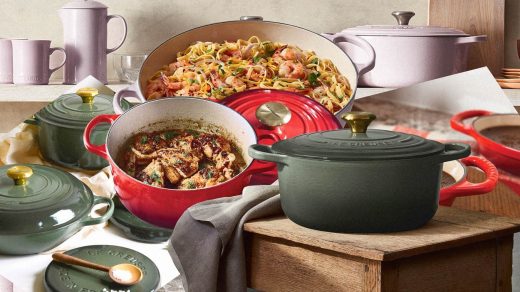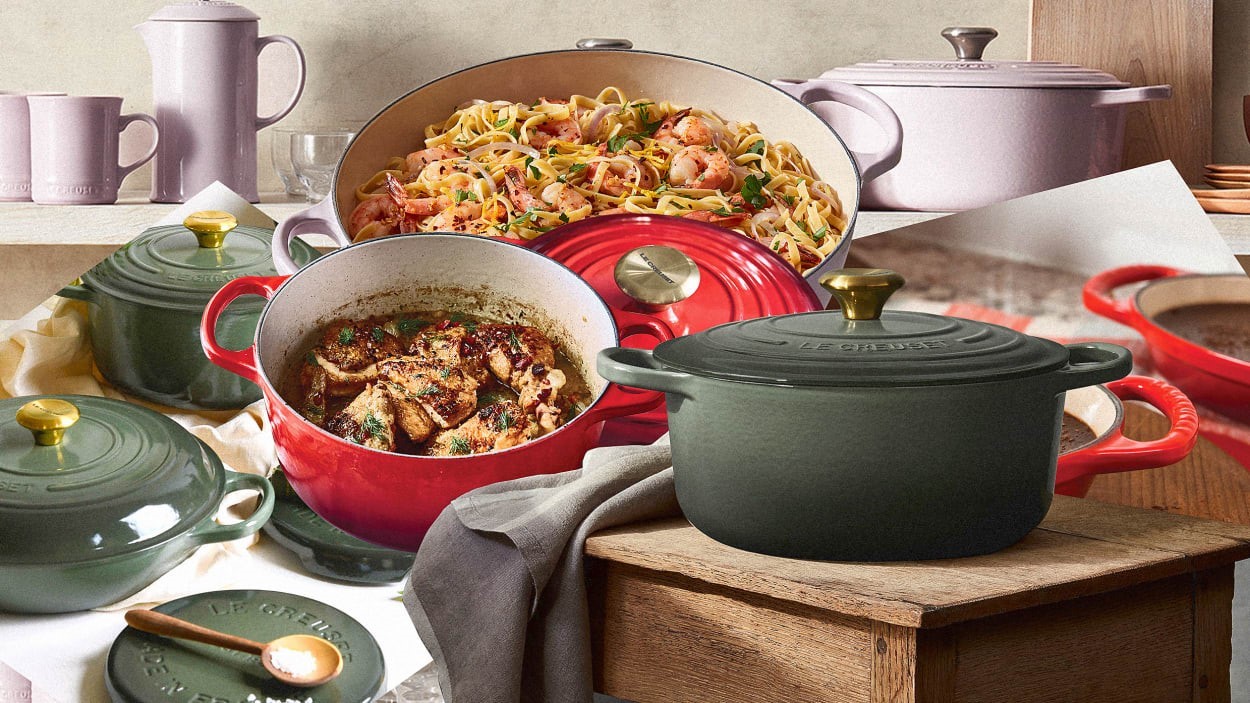How Le Creuset picks the viral colors that will fill kitchens next year
At the risk of social media evisceration and the scorn of the French culinary gods, let’s state the obvious: The average home cook does not need two Le Creuset dutch ovens. They’re designed to last a lifetime (or four). So why do people keep buying them, as well as Le Creuset’s other chef- and cook-beloved products?
As the brand chums the waters with carefully curated new color launches each year, fans are seemingly powerless to their allure … and they’re not shy to admit it. TikTok users yearn for some Le Creuset. Publications of all stripes immediately cover the latest color releases. Ultimately, Christopher Scinto, Le Creuset’s senior vice president of marketing and sales, says that fervent base makes for impressions in the billions.
“It’s every marketer’s dream, right?” he says.
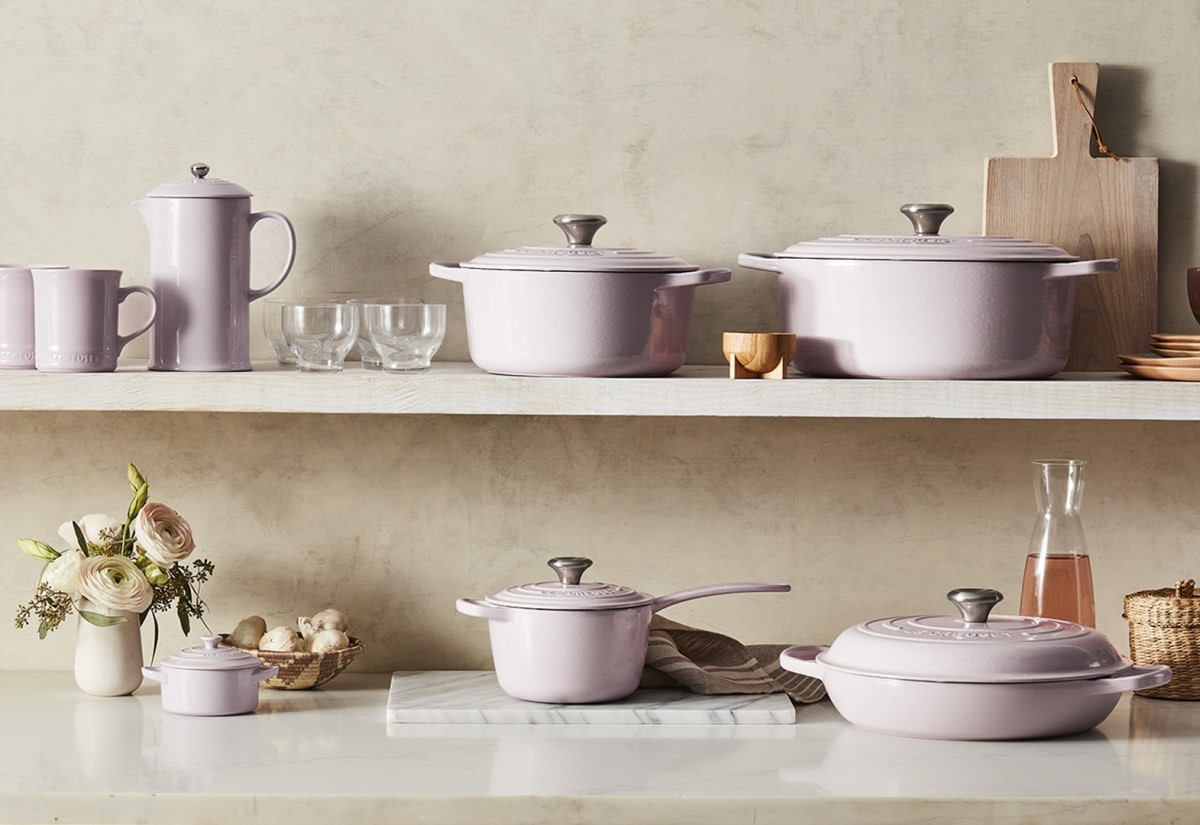
Le Creuset’s color history
Color has been at the core of Le Creuset’s DNA for nearly a century. In the 1920s, two Belgians—an enamel specialist named Octave Aubecq and a casting specialist named Armand Desaegher—met in Brussels and eventually made an industry breakthrough by bonding enamel to cast iron. And in doing so, they revolutionized the design of our kitchens by ushering in a glorious burst of technicolor.
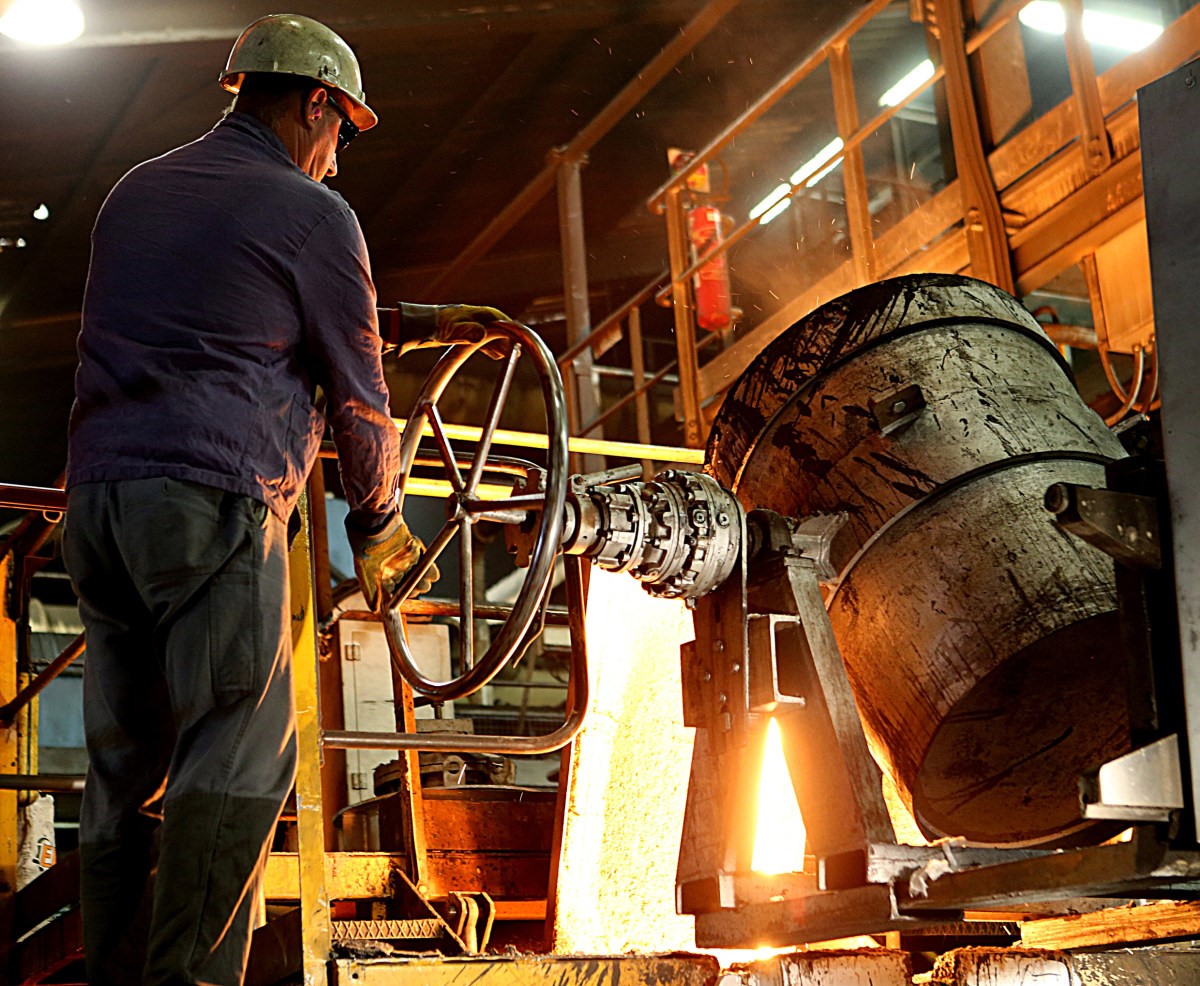
“Up until 1925, all cookware had been purely functionally manufactured,” Scinto says. “It would have likely been copper, some form of blackened metal or steel or iron. Literally no real color—so that was really the pioneering moment where Le Creuset came to be.”
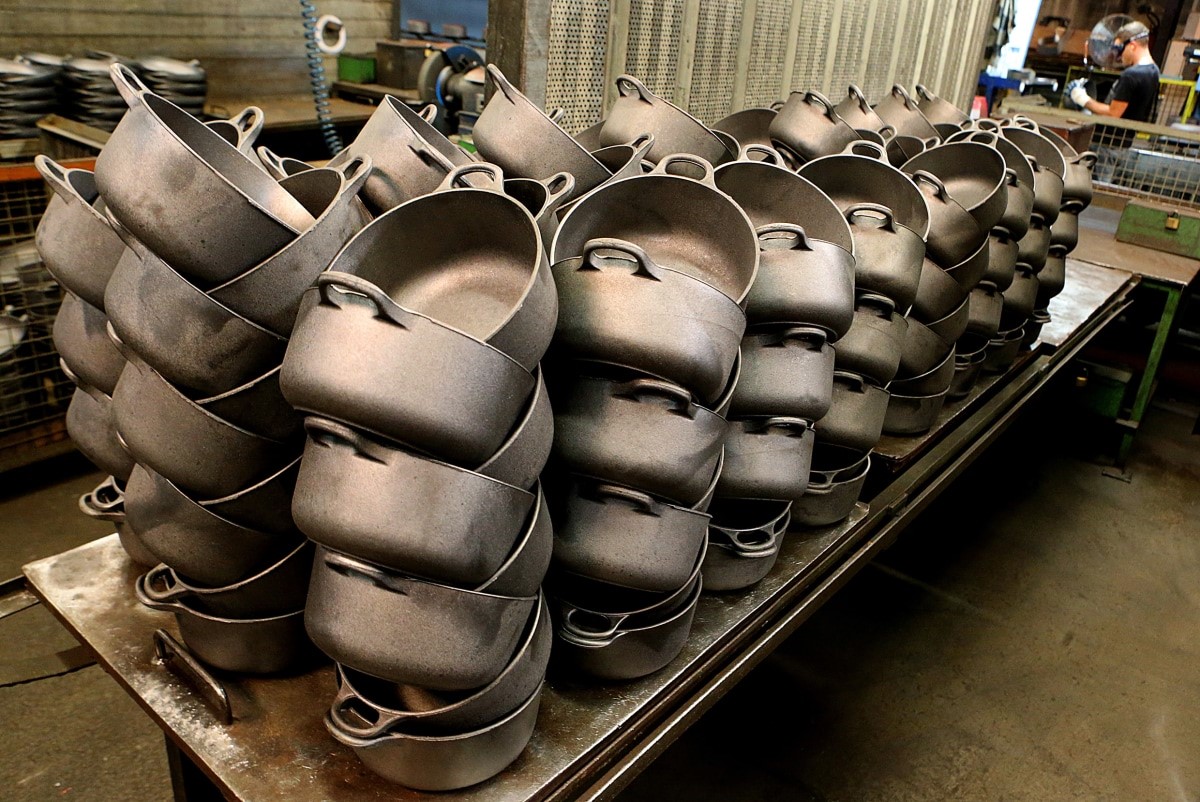
The two set up a foundry in Fresnoy-le-Grand, France, and began producing their cookware in what would become the company’s iconic hue: dubbed “Volcanique” in France, and eventually “Flame” in the U.S.: an orange scheme named after the molten cast iron used to forge the products.
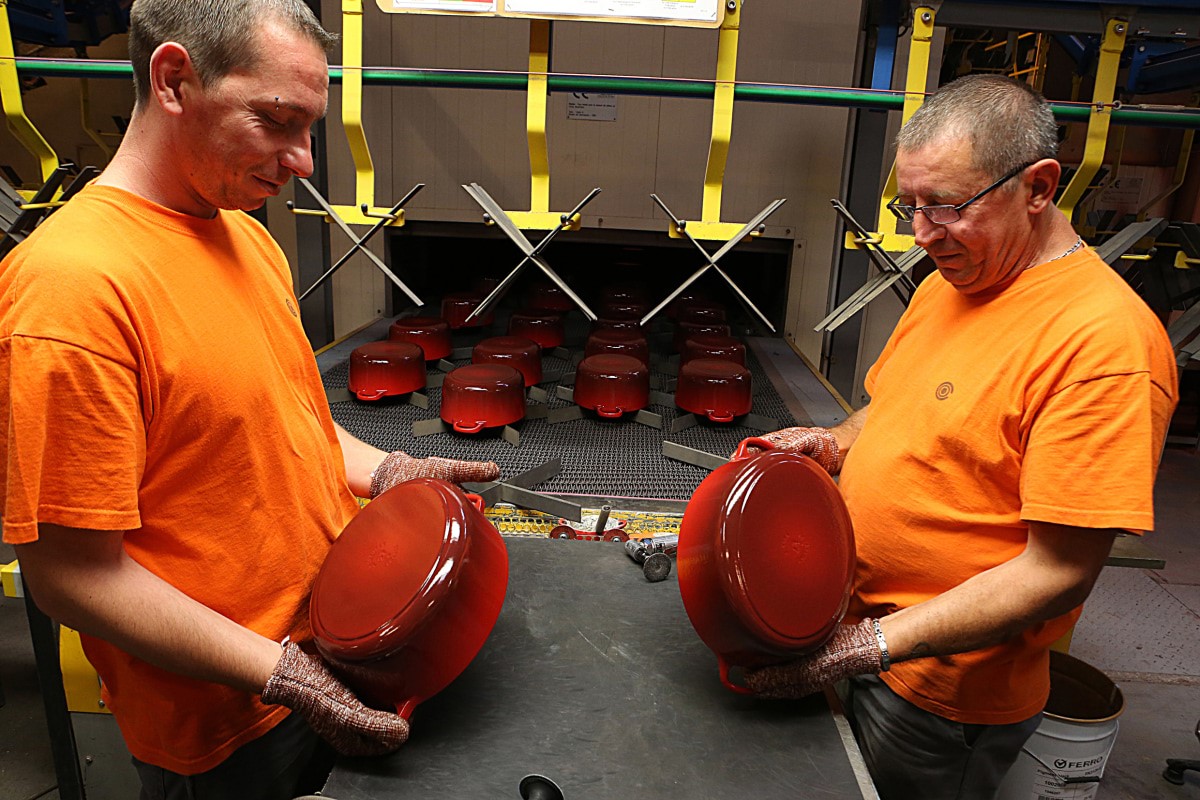
Still, Scinto says the brand didn’t fully embrace all the kaleidoscopic possibilities until the past two decades, when technological advances at the factory made it more feasible. Today, he dubs color essential to the brand, driven largely by consumer reaction to Le Creuset’s releases. From among the archive of 200 or so cast iron samples at the factory’s color lab in France, there are currently 33 active hues in the U.S. market, from Nectar and Olive to Oyster and Persimmon. Alongside a historical resurrection here and there, Scinto says Le Creuset adds two to three new colors to the range every year.

Choosing the Le Creuset palette
So, how does Le Creuset choose what to produce?
It begins with Scinto’s team scouring trend forecasts for the interior space over a long trajectory—though he notes they don’t involve themselves in reporting because the lead times are so long in industrial manufacturing. Psychology plays a role in choose the right color for the right momnet—as does the world at large.
“Whether it’s consumer confidence in a moment, geopolitical situations, environmental movements, changes or shifts, they all actually do manifest themselves in a multitude of ways,” he says. “You see definite shifts in color forecasts based off of the environments that surround them…We’re trying to weigh all of those vehicles carefully. And they also influence how we express the point of view on the color.”
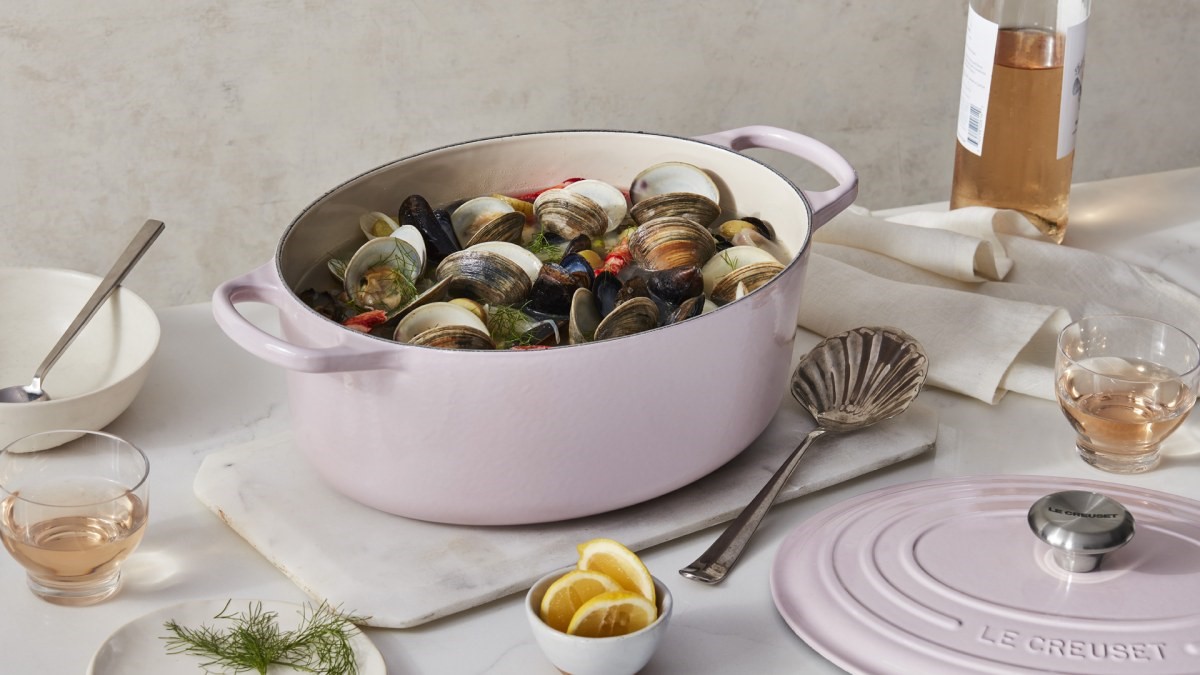
Take Shallot and Thyme, two of this year’s viral releases. For Shallot, which launched in the spring, Scinto says the team was seeking to convey a bit of fresh optimism. The dark, earthly neutral Thyme, meanwhile, bears a bit of a consoling element.
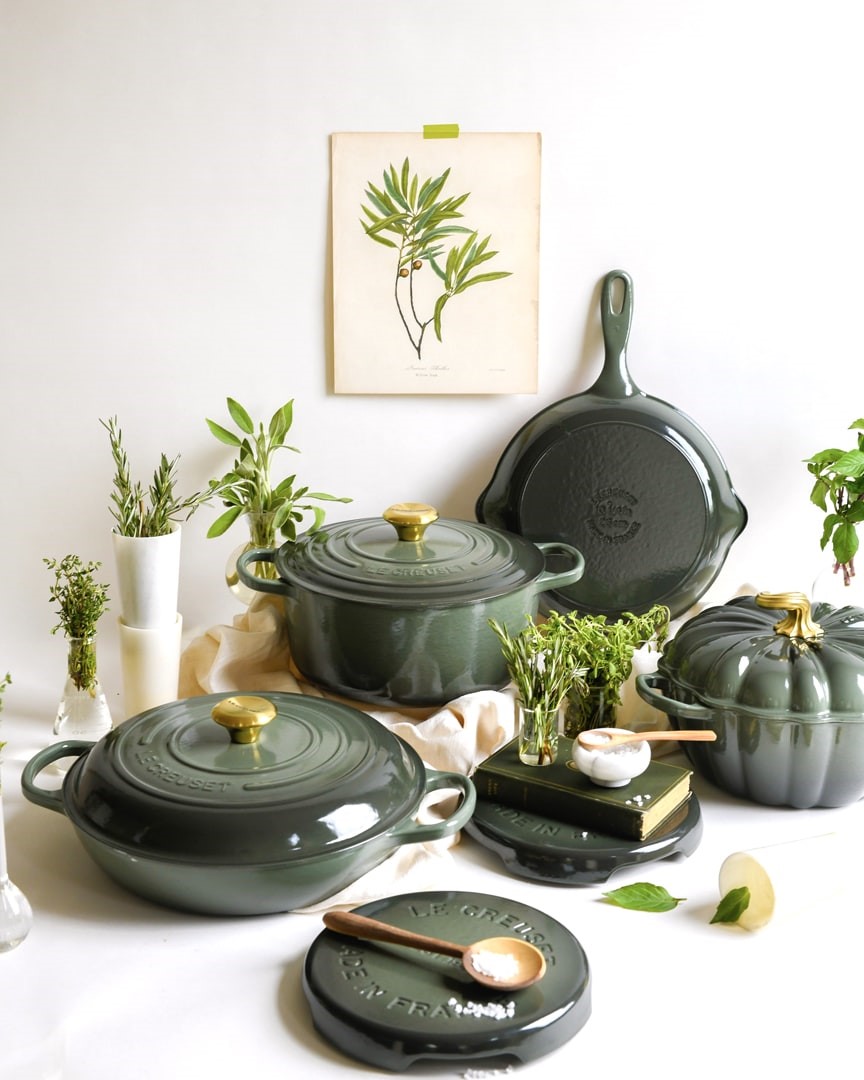
“As things become uncertain, people tend to gravitate towards things that are well-known and understood. And so Thyme is a slightly more serious color,” he says.
Once they’ve identified their desired hues, they send them along to the production squad in the factory, and that’s where things get truly complicated. They’ve turned some cast-iron offerings around in a few months. Others have taken years.
“There are limitations to what we can actually achieve versus what we can imagine,” he says. “Again, it’s not paint on a pot. It is a chemical reaction. And what you see as a final stage is nothing you can even comprehend based off of how it starts; once it’s fired at 900 degrees celsius, it transforms. It’s a chemical reaction and a bonding experiment.”
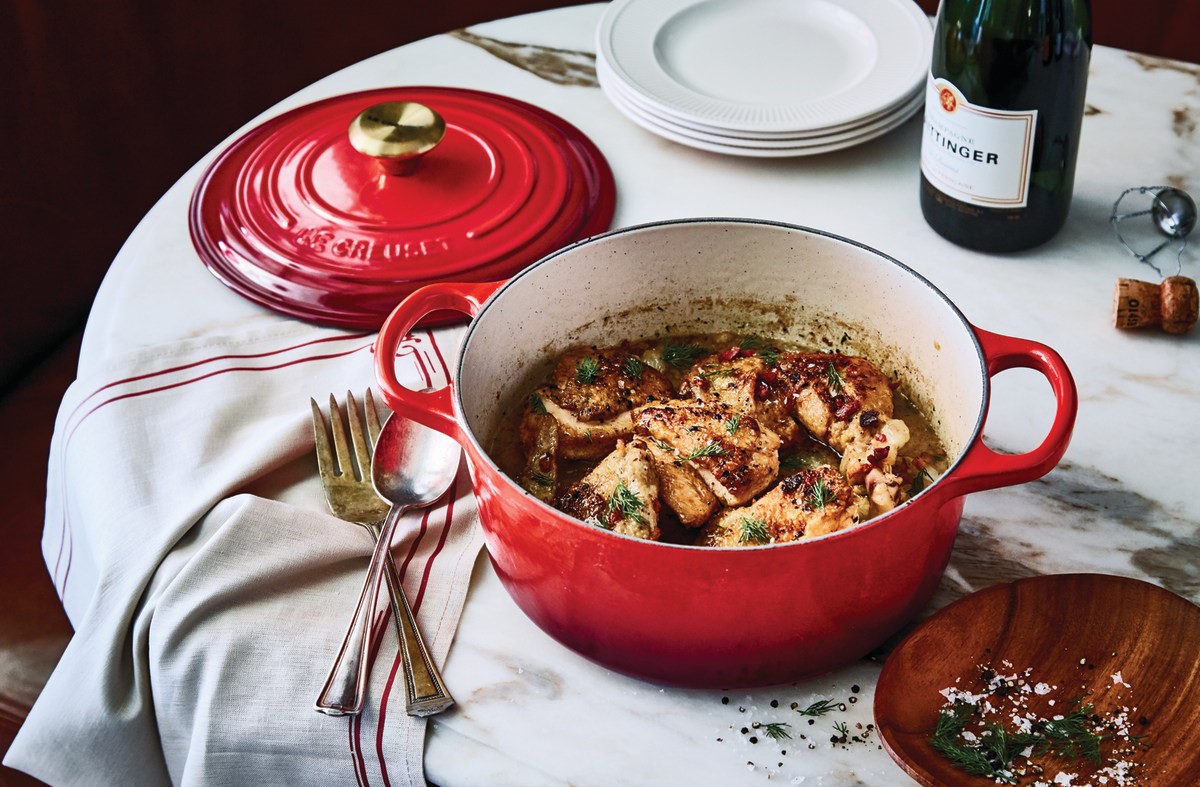
Shallot was particularly tricky to get right. The team was looking to dovetail with the pale, tinted neutrals happening in interior design, but it’s difficult to achieve color stability for such hues. At the end of the day (or, well, year), when they have locked in their formula, the process in brief goes like this: First, the raw metal is melted at almost 3,000 degrees Fahrenheit, and poured into a crucible (which in French is, naturally, a creuset.) Craftspeople then pour the material into sand molds, cool and refine the subsequent pieces, and prep them for the enameling process. After a clear layer has been applied, they’re fired at around 1,500 degrees; then, finally, the second layer—the color—goes on and is re-fired, and the cookware springs to life.
Ultimately, as the pieces are being created, they pass through the hands and scrutiny of 15 artisans who, by some accounts, reject some 30 percent of them due to any perceived imperfections. (Yet another subsequent challenge: matching the shades across the rest of Le Creuset’s material offerings, such as stoneware, ceramics and beyond.)
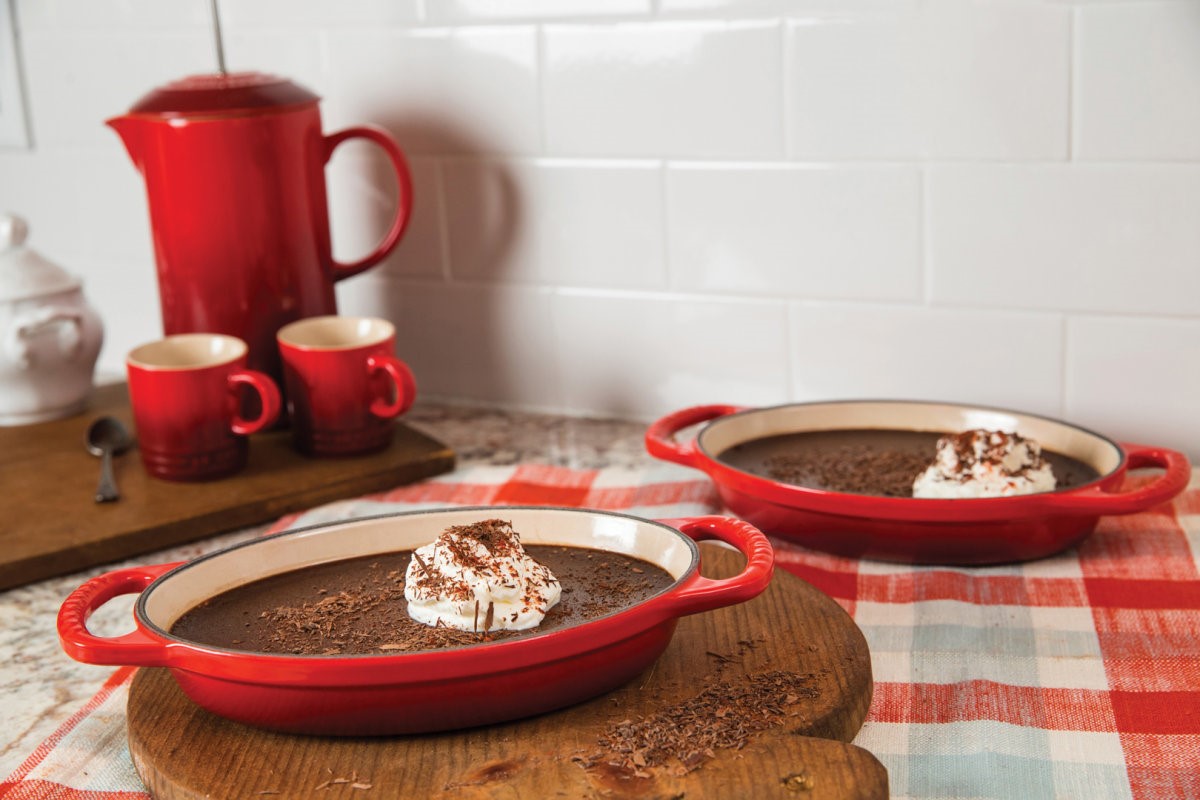
Scinto says Cerise, Le Creuset’s signature red, is still the company’s most popular hue. But new color launches are certainly not in vain. While Scinto didn’t share the financials associated with recent launches, the billions of impressions are likely an indication of their bottom-line efficacy—especially in an era of open floor plans where kitchens and their countertop cookware are more visible than ever.
Le Creuset has indeed mastered the art of turning high function into rabid collection. But there’s still a sought-after product line the team has yet to crack: neon. Super-brights aren’t technically feasible yet, but I wouldn’t rule it out—after all, as the brand approaches its centennial, it’s perhaps a powerful reminder that they’ve done the impossible before, and could redefine our kitchens once again.
(10)

